Why Precision Weighing Matters in Chemical Manufacturing
In chemical manufacturing and formulation, accurate weighing is critical. From raw material dosing to final batch blending, a high-capacity tank or hopper scale that’s out of tolerance can lead to:
- Off-spec product requiring costly rework
- Safety risks from incorrect ingredient ratios
- Delays in production schedules
- Increased scrap and waste costs
When your tank or hopper load cells aren’t performing, you need a service provider who can diagnose the real issue — not just start swapping parts
The Case: 50,000 lb High-Capacity Mixing Tank
A chemical manufacturer contacted us about a 6-load cell, 50,000 lb net weight tank used in their production process. Their previous service provider had recommended:
- Two new load cells
- Two new junction boxes
- Possibly a new weight indicator
We suspected this “shotgun approach” could mean unnecessary parts replacement — and unnecessary downtime. So we went in with the right tools and no assumptions.
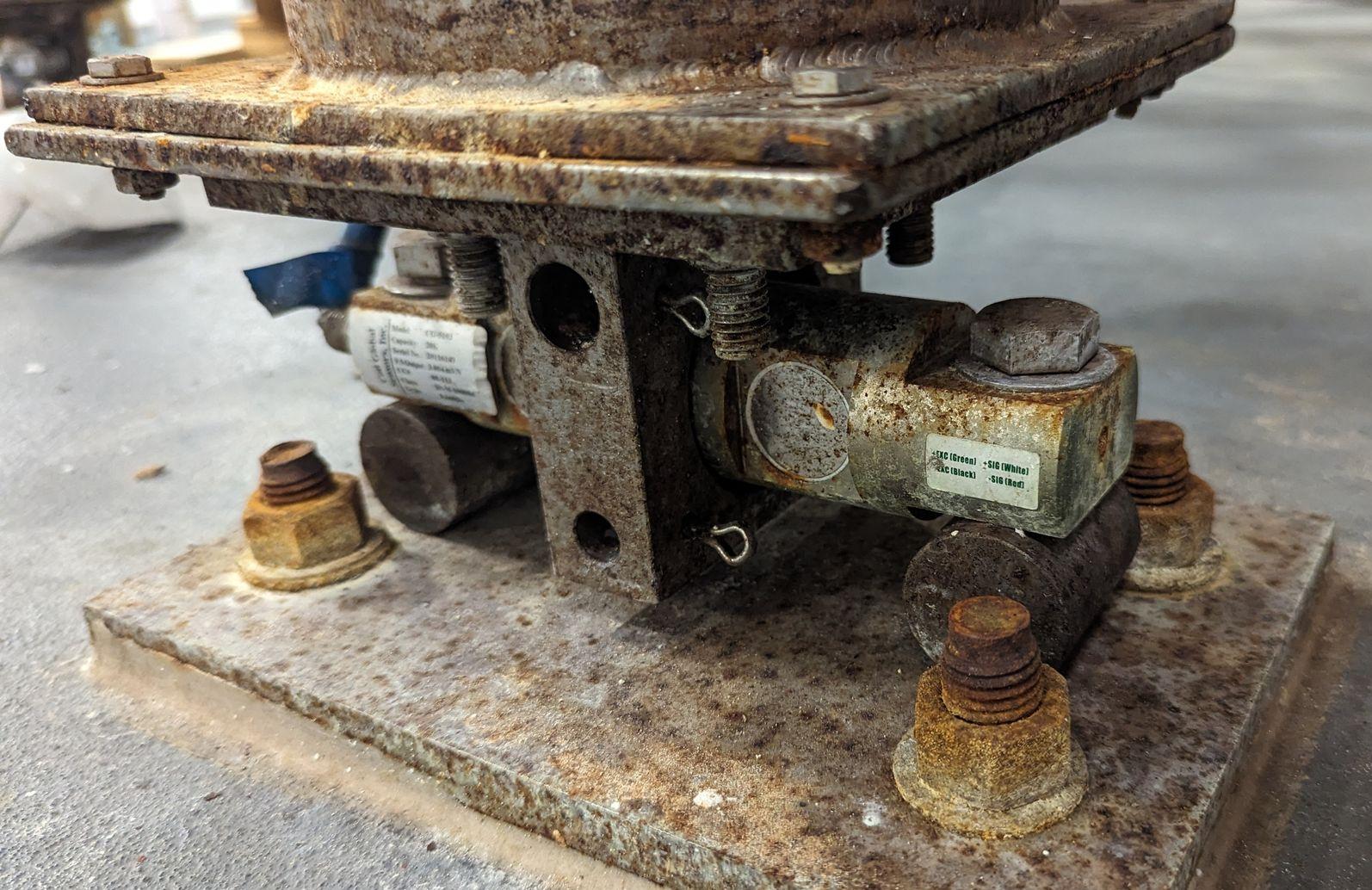
Step 1: Mechanical & Physical Inspection
Before touching any wiring, we always start with a thorough physical inspection. This often reveals:
- Mounting issues
- Physical damage from overloading or corrosion
- Misalignment or structural interference
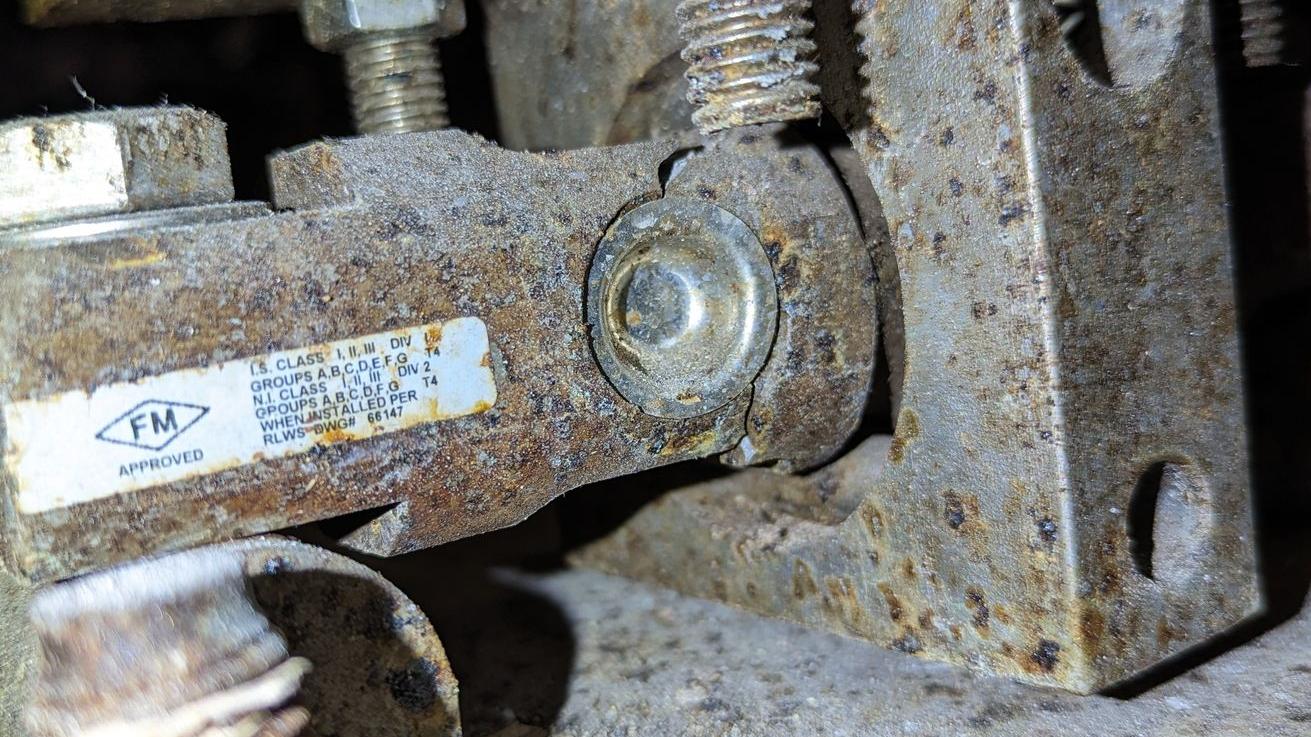
In this case, we discovered a cracked load cell body. It wasn’t obvious without a bright inspection light and crawling under each mount to check. The failure had caused the tank to lift slightly on that corner, unloading another cell and creating a false zero reading — which the previous service company had mistaken for a bad cell.
Step 2: Targeted Repairs
We replaced the single damaged load cell. No junction boxes or indicators were needed. By avoiding unnecessary part swaps, we:
- Reduced downtime
- Lowered repair costs
- Restored weighing accuracy quickly
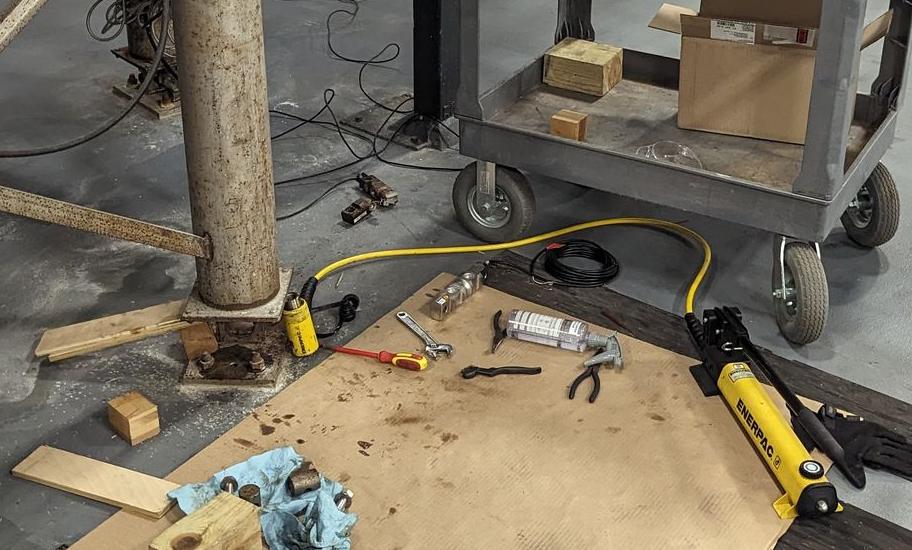
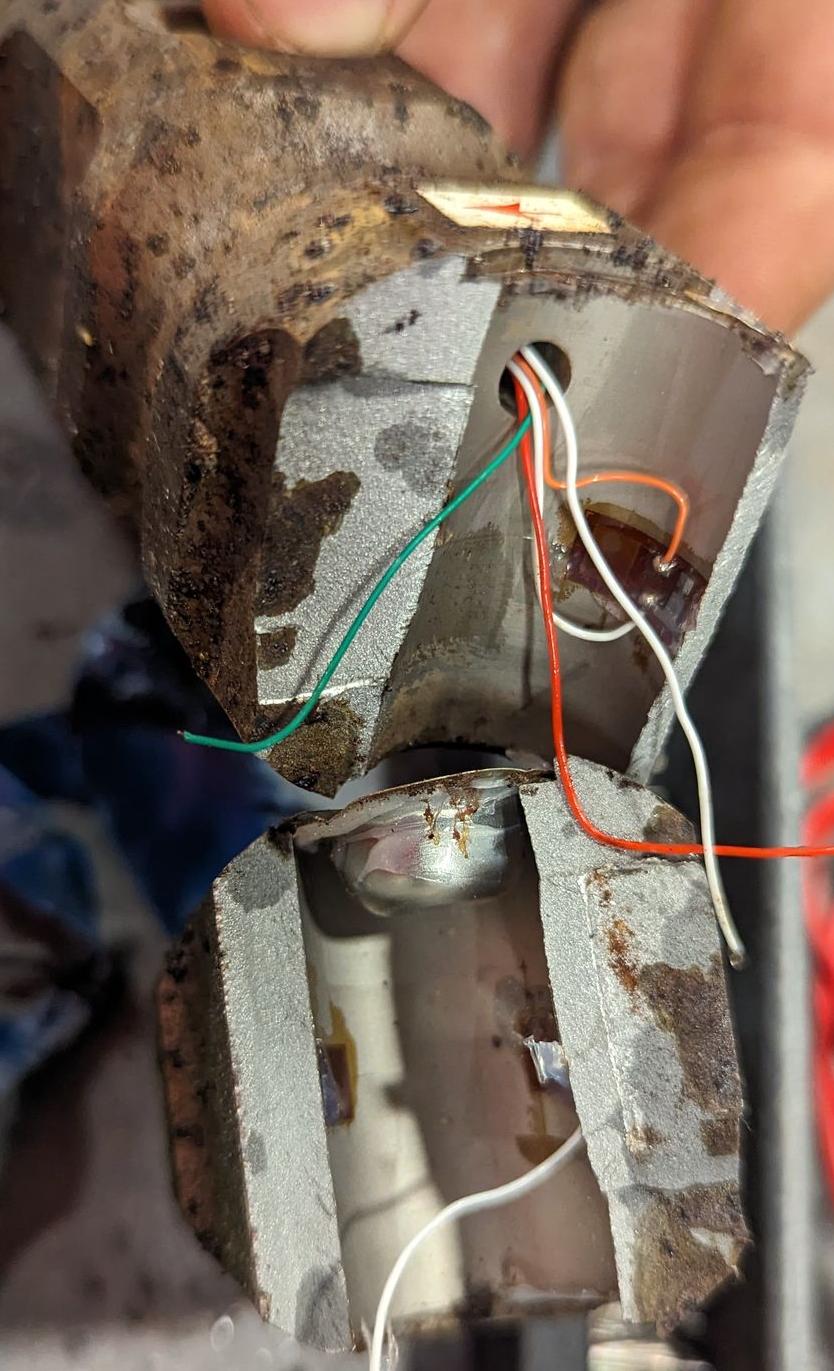
Step 3: Improving Calibration Setup
Accurate calibration requires applying certified test weights to the tank in a controlled way. But like many batching environments, this facility had:
- Limited space around tanks
- No flat or safe surfaces for test weight placement
Initially, the only viable location was the top rim — fine for small vessels, but not safe or accurate for a 50,000 lb tank.
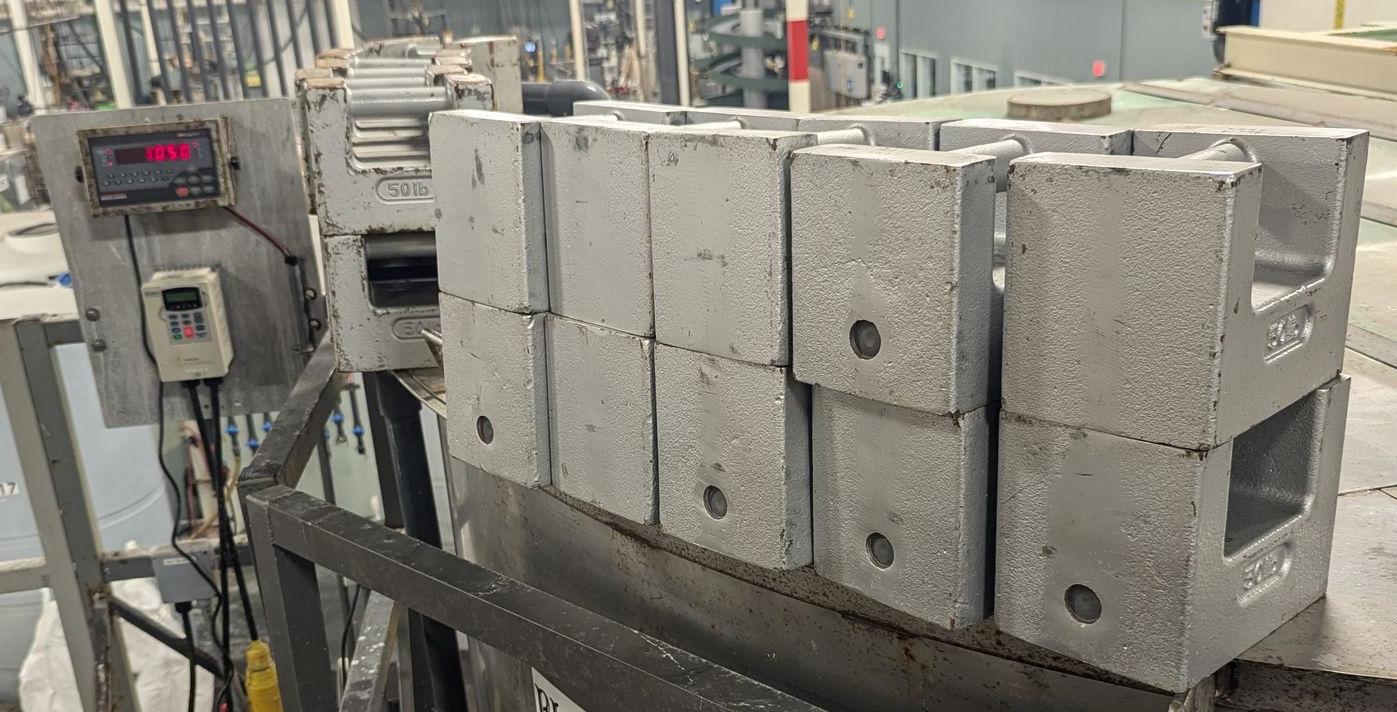
Step 4: Permanent Calibration Mounts
Following our recommendation, the customer’s in-house welder fabricated bolt-on weight mounts that wrap around the tank legs.
- Allows quick installation for future calibrations and can be removed during production to save space and avoid injury to staff
- Supports 4,000 lbs of NIST-certified test weight safely
- Enables targeted loading of 1,000 lbs over a single load cell for diagnostics
This upgrade not only improved accuracy for the repaired tank, but also created a facility-wide standard for all future load cell calibrations.
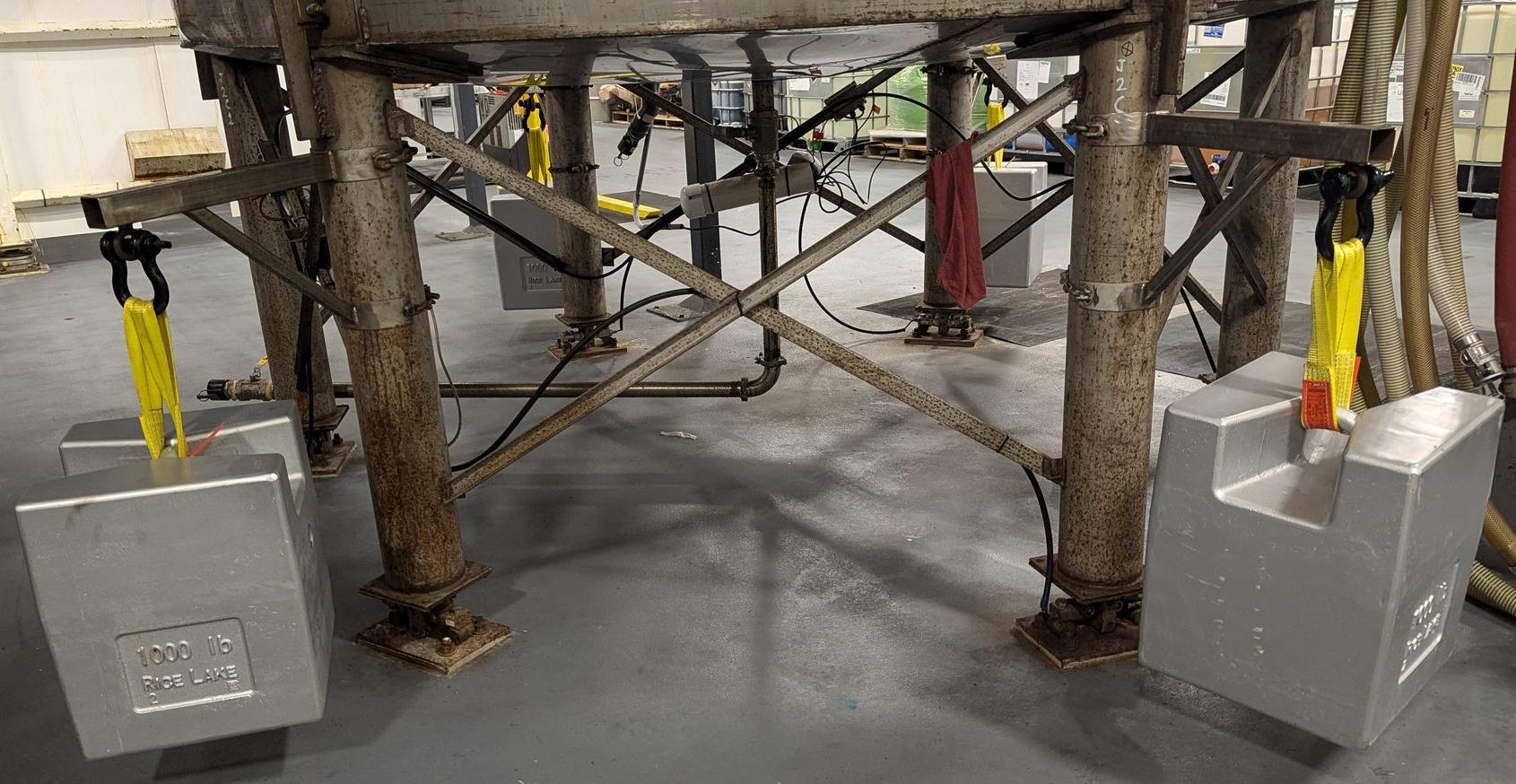
The Results
- Single load cell replacement restored full system function
- Improved calibration setup ensures better batching accuracy
- Reduced long-term service costs and downtime
- Higher confidence in formulation precision for every batch
📞 If you operate a chemical manufacturing or formulation facility, Peninsula Scale can help with:
- High-capacity tank and hopper scale troubleshooting
- Load cell repair and replacement
- Calibration system upgrades for safer, faster, more accurate span testing
- Batching and blending scale optimization